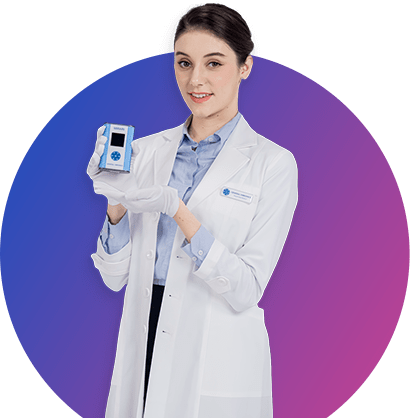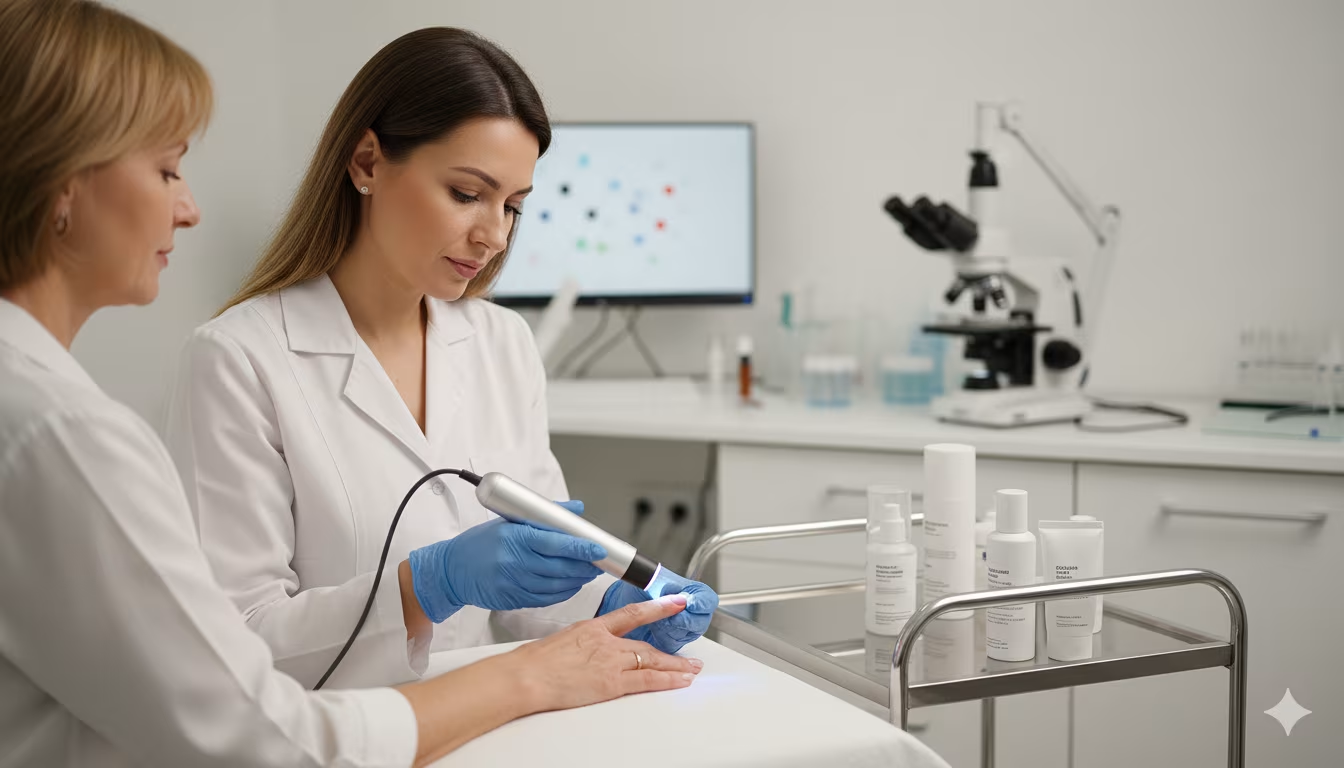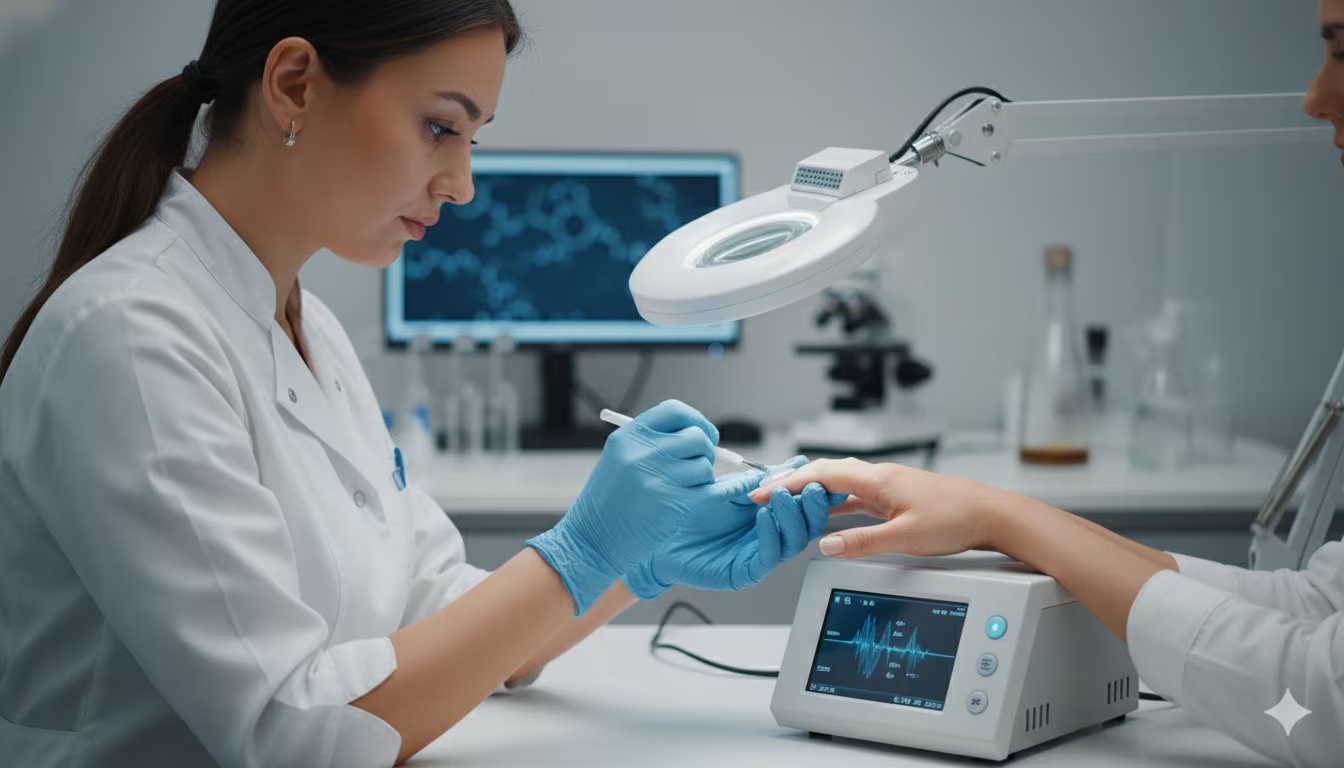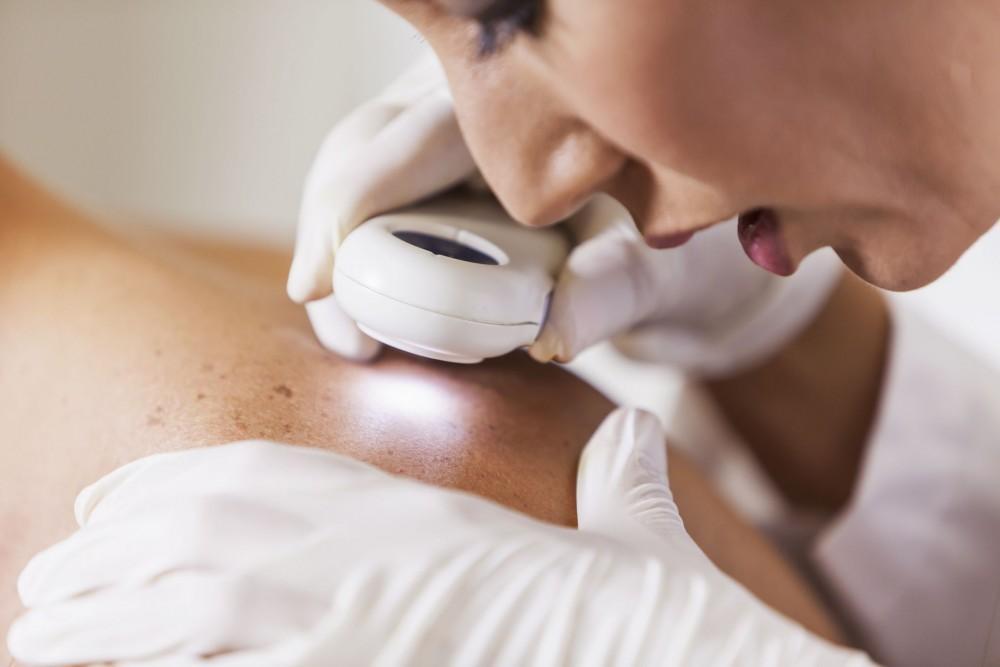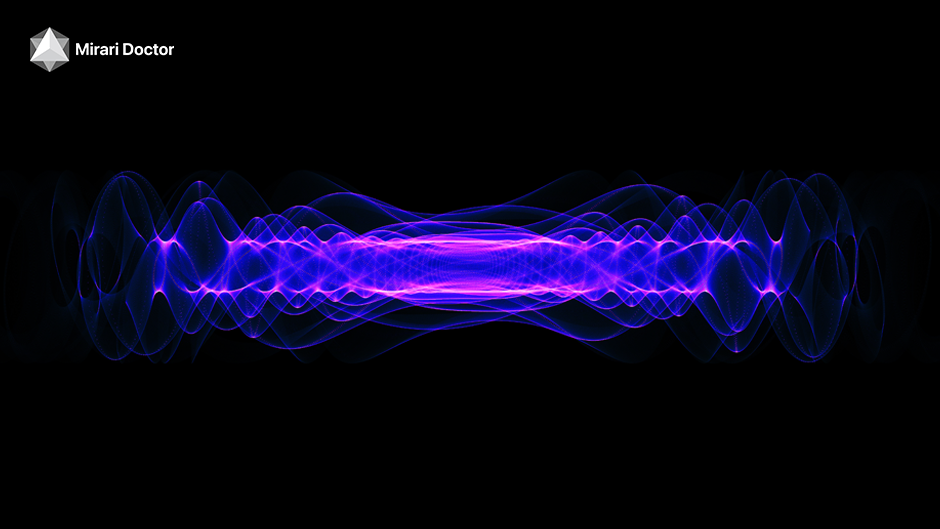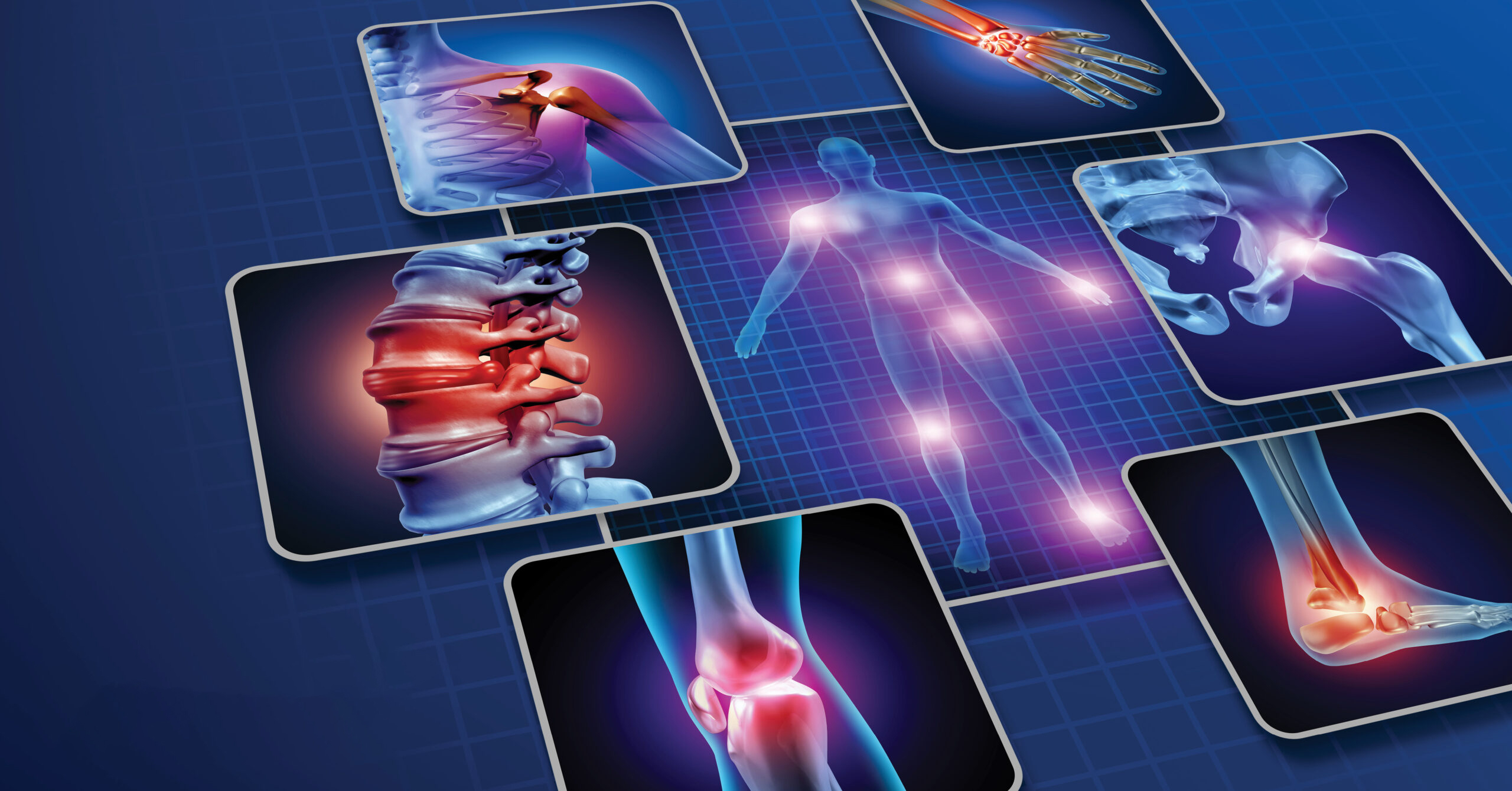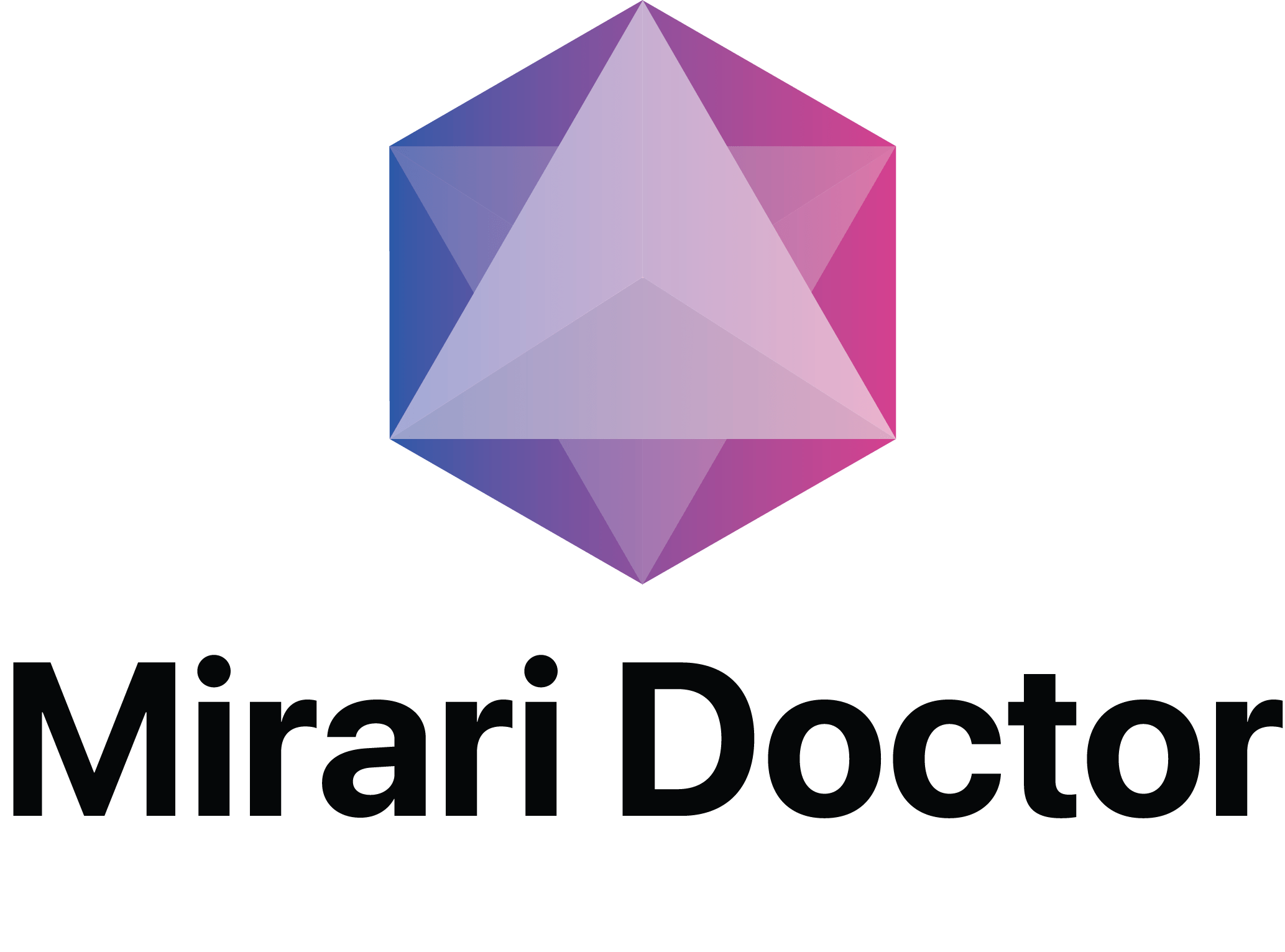
You May Be Interested In:
Wound healing is a complex biological process that can be significantly accelerated through cold atmospheric plasma (CAP) therapy—a revolutionary, non-invasive treatment that generates reactive oxygen and nitrogen species to promote tissue regeneration. Clinical trials demonstrate that cold plasma achieves 92% complete healing rates compared to 32% with conventional therapy, while reducing bacterial load by 99.9% within minutes[1][2]. This innovative therapy operates at room temperature, ensuring it does not damage heat-sensitive tissues while providing powerful antimicrobial and cellular stimulation effects for both chronic and acute wounds.
Understanding Wound Healing and Cold Plasma Technology
What is wound healing?
Normal wound healing progresses through four overlapping physiological phases working in coordinated sequence. The hemostasis phase (0-2 days) immediately follows injury, triggering vasoconstriction and platelet aggregation to form a protective fibrin clot[3]. The inflammatory phase (1-7 days) involves vasodilation, allowing white blood cells to enter the wound area and remove bacteria and debris.
During the proliferative phase (5 days to 2+ weeks), new granulation tissue forms through fibroblast activity and collagen synthesis. Angiogenesis creates new blood vessels to supply oxygen and nutrients. The final remodeling phase (3 weeks to 2 years) reorganizes collagen fibers, strengthening the healed tissue to approximately 80% of its original strength[3].
Timeline comparison:
| Wound Type | Expected Healing Duration | Key Characteristics |
|---|---|---|
| Acute wounds | 2 weeks – 2 months | Progress normally through all healing phases |
| Chronic wounds | >3 months without progress | Stalled in inflammatory phase, biofilm formation |
The challenge of chronic wounds
Chronic wounds represent a significant healthcare burden affecting 140 million people worldwide. In the United States alone, wound care costs exceed $200 billion annually[1]. Among diabetic patients, approximately 15% develop foot ulcers during their lifetime, which constitute the leading cause of non-traumatic lower extremity amputations.
These wounds fail to heal due to several interconnected factors:
- Persistent inflammatory state: Excessive production of inflammatory cytokines and matrix metalloproteinases degrades newly formed tissue
- Biofilm formation: The National Institutes of Health reports that 80% of wound infections involve protective bacterial biofilms resistant to conventional treatments
- Bacterial resistance: Multidrug-resistant pathogens complicate infection management
- Impaired cellular function: Chronic wound cells exhibit reduced growth factor receptor density and diminished healing responses
For comprehensive information on managing wounds that resist standard treatment, see our guide on what to do when a wound is not healing.
What is cold atmospheric plasma (CAP)?
Cold atmospheric plasma represents a fourth state of matter—a medical-grade ionized gas that operates at or near room temperature (below 43°C). Unlike thermal plasma found in industrial applications or stars, CAP maintains therapeutic efficacy without causing heat damage to sensitive tissues[2].
CAP devices generate a controlled cocktail of therapeutic components:
- Reactive oxygen and nitrogen species (RONS): Including hydrogen peroxide, nitric oxide, and hydroxyl radicals
- Low-level ultraviolet radiation: UV-A spectrum (310-470 nm) that’s non-damaging to tissues
- Charged particles and ions: Electric field effects that influence cellular processes
- Minimal heat transfer: Surface temperatures maintained below thermal damage thresholds
The FDA has granted 510(k) clearance to select cold plasma devices as Class II medical devices for wound healing applications, marking a significant milestone in advanced wound care technology.
How Cold Plasma Promotes Wound Healing
Antimicrobial and biofilm disruption
Cold plasma’s antimicrobial action represents one of its most powerful therapeutic mechanisms. The RONS generated by CAP damage bacterial cell membranes and DNA through oxidative stress, achieving 99.9% bacterial reduction within 2-5 minutes of application[4]. This rapid antimicrobial effect extends to multidrug-resistant strains, fungi, viruses, and bacterial spores—pathogens that often resist conventional antibiotics.
The technology proves particularly effective against biofilms, which are multicellular bacterial communities protected by self-produced extracellular matrices. These biofilms create a major obstacle in chronic wound healing, as they’re up to 1,000 times more resistant to antimicrobial agents than planktonic bacteria. CAP penetrates and disrupts these protective structures, exposing bacteria to the body’s immune defenses and creating a favorable environment for healing[4].
Cellular stimulation and tissue regeneration
Cold plasma activates multiple cellular pathways essential for tissue repair. It stimulates fibroblast proliferation and migration—cells responsible for collagen synthesis and extracellular matrix formation. Keratinocytes, the primary cell type in the epidermis, respond to CAP treatment with enhanced migration and proliferation, accelerating re-epithelialization of the wound surface[1].
Key growth factors increased by CAP treatment:
- VEGF (Vascular Endothelial Growth Factor): Promotes new blood vessel formation
- FGF-2 (Fibroblast Growth Factor-2): Stimulates fibroblast activity and angiogenesis
- PDGF (Platelet-Derived Growth Factor): Attracts immune cells and promotes granulation tissue
- TGF-β (Transforming Growth Factor-beta): Regulates cellular differentiation and matrix production
These molecular signals help transition chronic wounds from the inflammatory phase to the proliferative healing phase—a critical step often blocked in non-healing wounds.
Enhanced microcirculation and angiogenesis
Adequate blood supply is fundamental to wound healing, providing oxygen, nutrients, and immune cells to the wound bed. Cold plasma significantly improves microcirculation and promotes angiogenesis—the formation of new blood vessels[1]. This effect proves especially critical for diabetic and venous ulcers, which typically present with compromised circulation.
Studies using advanced imaging techniques demonstrate that CAP treatment increases deep tissue oxygen saturation and improves hemoglobin distribution in wound tissues. The therapy upregulates VEGF expression, triggering endothelial cell proliferation and new capillary formation. Within treatment areas, measurable increases in tissue oxygenation occur, reversing the hypoxic conditions that impair healing.
Inflammation modulation
While inflammation is necessary for proper wound healing, chronic excessive inflammation prevents wound closure. Cold plasma therapy modulates inflammatory responses by reducing pro-inflammatory cytokines—including TNF-α, IL-6, and IL-1β—by 40-60% within 72 hours of treatment initiation[2].
CAP activates the NRF2 (nuclear factor erythroid 2-related factor 2) antioxidant pathway, which helps cells respond to oxidative stress without triggering destructive inflammation. This balanced immune response allows chronic wounds to exit the inflammatory phase and progress toward tissue regeneration. Importantly, CAP achieves this modulation without suppressing the necessary healing signals that guide tissue repair.
Reduced scarring and tissue remodeling
The quality of wound closure matters as much as the speed of healing. Cold plasma therapy optimizes extracellular matrix organization by regulating matrix metalloproteinases (MMPs)—enzymes involved in collagen degradation and remodeling[1]. By balancing collagen synthesis and degradation, CAP helps prevent excessive scar tissue formation while ensuring adequate tensile strength.
Clinical observations suggest that CAP-treated wounds demonstrate improved aesthetic outcomes with less hypertrophic scarring. The therapy influences proteins involved in tissue remodeling, promoting organized collagen deposition rather than the disorganized fibrosis characteristic of problematic scars.
Clinical Evidence: Cold Plasma Wound Healing Efficacy
Randomized controlled trial results (2020-2025)
The most compelling evidence for cold plasma efficacy comes from multiple randomized controlled trials conducted across international medical centers. A landmark 2020 study published in JAMA Network Open demonstrated that CAP treatment achieved significantly accelerated wound healing in diabetic foot ulcers compared to standard care plus placebo[4].
Clinical trial outcomes summary:
| Outcome Measure | Cold Plasma Group | Standard Care Group | P-Value |
|---|---|---|---|
| Complete healing rate | 92% | 32% | <0.001 |
| Treatment duration reduction | 40-60% faster | Baseline | <0.01 |
| Wound size reduction (2 weeks) | >50% of patients | <20% of patients | <0.05 |
| Bacterial load reduction | 99.9% | <50% | <0.001 |
A 2023 multicenter randomized controlled trial examining chronic wounds demonstrated that cold plasma therapy significantly accelerates wound closure compared to standard wound therapy across multiple wound types[5]. These consistent results across different study populations and wound etiologies strengthen the evidence for CAP as an effective therapeutic modality.
Diabetic foot ulcer outcomes
Diabetic foot ulcers present unique healing challenges due to neuropathy, impaired circulation, and increased infection susceptibility. Cold plasma therapy addresses these multiple pathophysiological factors simultaneously. A 2023 safety study of CAP treatment in diabetic foot ulcers reported 43% mean reduction in ulcer surface area during the treatment period[6].
The study documented significant decreases in Staphylococcus aureus bacterial load immediately following CAP application, with no serious adverse device effects. Most importantly, three infectious serious adverse events that occurred were manageable without compromising patient safety, and 55% of subjects reported only transient mild effects during treatment.
For patients concerned about diabetic foot ulcers, cold plasma offers hope for accelerated healing and amputation prevention. The therapy’s ability to reduce wound pH from 9.7 to 7.1 creates optimal conditions for cellular activity and healing progression.
Chronic venous ulcer and pressure ulcer data
Venous leg ulcers and pressure ulcers often persist for years despite standard treatment protocols. Clinical trials demonstrate that CAP therapy enhances healing even in wounds averaging 3+ years of chronicity[5]. Patients report improved wound-specific quality of life scores and significant pain reduction—important outcomes beyond mere wound size measurements.
One study comparing once-weekly versus twice-weekly plasma treatments found that both groups exhibited significant wound area reduction, with the once-weekly protocol proving equally effective[1]. This finding suggests that convenient, cost-effective treatment schedules can achieve excellent clinical outcomes, making CAP accessible for routine clinical practice.
Safety profile and tolerability
Extensive safety data from multicenter clinical trials conducted between 2016 and 2025 report no serious adverse events directly attributed to cold plasma therapy when used at therapeutic parameters[2][4]. The most common side effects include mild, temporary skin redness or warmth that resolves within hours of treatment.
Patients describe the treatment as painless or causing minimal discomfort—a significant advantage over debridement procedures or other wound interventions. The non-invasive nature of CAP therapy, combined with its excellent safety profile, makes it suitable for vulnerable populations including elderly patients and those with multiple comorbidities.
Types of Wounds Treated with Cold Plasma
Diabetic foot ulcers (DFUs)
Cold plasma therapy has demonstrated remarkable efficacy for diabetic foot ulcers classified as Wagner-Armstrong grades 1B–2B (superficial to tendon-deep without bone involvement). The therapy simultaneously addresses the three primary pathophysiological factors in DFUs: neuropathy-related trauma, infection, and impaired circulation[6].
By reducing bacterial load, improving tissue oxygenation, and modulating inflammation, CAP creates optimal conditions for healing in diabetic tissue that typically responds poorly to conventional treatment. Learn more about cold plasma treatment for diabetes-related complications.
Venous leg ulcers
Venous insufficiency creates a hostile wound environment characterized by chronic inflammation, bacterial colonization, and impaired endothelial function. Cold plasma modulates these pathological processes while remaining compatible with compression therapy—the cornerstone of venous ulcer management[1].
CAP enhances vascular repair mechanisms and reduces the persistent inflammatory state that prevents venous ulcer closure, offering new hope for patients who have exhausted conventional treatment options.
Pressure ulcers (bedsores)
Pressure ulcers affect immobile and elderly patients, particularly those in long-term care facilities. Cold plasma accelerates healing in these vulnerable populations by reducing infection risk and stimulating tissue regeneration in deep tissue injuries[2]. The therapy proves particularly effective for Stage II–III pressure injuries, where tissue loss extends through the dermis.
For comprehensive information, visit our guide on cold plasma for pressure ulcers.
Post-surgical and traumatic wounds
Acute wounds from surgery or trauma benefit from CAP’s infection prevention capabilities and accelerated epithelialization. The therapy reduces inflammatory response duration following surgery, enabling faster return to normal activities with improved cosmetic outcomes[1].
Burn wounds and other acute injuries
Emerging evidence suggests that cold plasma improves healing metrics in superficial to partial-thickness burns. Studies demonstrate pain reduction during treatment and enhanced skin graft integration. For burn care information, see our article on 1st, 2nd, and 3rd degree burn treatment.
Cold Plasma Application Methods and Devices
Direct application: handheld plasma devices
Handheld plasma jet devices represent the most common CAP delivery method. These devices use argon or helium carrier gas with radiofrequency (RF) or direct current (DC) power supplies to generate plasma at the tip of a handheld applicator. Treatment areas range from 1–11 cm² per application zone, with the plasma applied in direct contact or near-contact mode (1-5 mm from wound surface)[2].
FDA-cleared devices available in the United States include:
- MIRARI Cold Plasma System (General Vibronics Inc.)
- SteriPlas/MicroPlaSter (Adtec Healthcare)
- kINPen (neoplas med)
One pioneering device in this field is the MIRARI Cold Plasma, developed by General Vibronics and distributed by Mirari Doctor. Unlike traditional systems, it harnesses nitric oxide for safe, non-thermal healing across dermatology, wound care, and pain management applications.
Indirect application: large-area plasma systems
Dielectric Barrier Discharge (DBD) technology enables treatment of larger wound areas. These systems generate plasma between electrodes and transport it to the wound via carrier gas, creating homogeneous plasma fields over areas up to 11 × 11 cm[1]. Automated application reduces variability between practitioners and ensures consistent treatment parameters.
Plasma-activated liquids (PALs)
Water, saline, or specialized wound care solutions can be activated with plasma and then applied to wounds. This indirect treatment method maintains RONS concentration for extended therapeutic effect, offering an alternative for sensitive or anatomically challenging wounds. Research continues to optimize PAL formulations and application protocols[2].
Plasma-enhanced wound dressings
Novel CAP dressings integrate plasma generation directly into wound dressing materials. Applied for 7-day treatment periods, these advanced dressings demonstrate superior outcomes in oxygen saturation, hemoglobin distribution, and tissue hydration compared to conventional dressings[1]. Patients report excellent tolerability and pain reduction with plasma-enhanced dressings.
Home-use vs. clinical-grade devices
Clinical-grade cold plasma systems typically cost $3,500–$5,000 or more, designed for hospital and clinic use. Home-use systems are emerging with appropriate safety certifications, though most treatments currently occur in specialized wound care clinics. Telehealth integration enables remote monitoring and support for patients receiving home-based therapy[7].
Step-by-Step Cold Plasma Wound Treatment Protocol
Pre-treatment assessment and preparation
Comprehensive wound evaluation precedes plasma therapy. Clinicians assess wound size, depth, exudate level, and bacterial load while reviewing patient medical history—particularly diabetes control, current medications, and comorbidities. Baseline photography documents wound appearance, and informed consent discussions set realistic treatment expectations[4].
Wound bed preparation and debridement
Optimal plasma therapy requires proper wound bed preparation. Clinicians remove necrotic tissue, slough, and debris before plasma application. Wounds are cleansed with sterile saline or appropriate wound cleansers, ensuring a dry or minimally moist wound surface for optimal plasma contact. Systemic antibiotics may be indicated for infected wounds as an adjunct to CAP treatment[6].
Cold plasma application procedure
Treatment sessions typically last 2–15 minutes depending on device type and wound size. The plasma device is held in direct contact or 1–5 mm from the wound surface, making multiple passes to ensure complete coverage. Treatment frequency ranges from daily applications for severe wounds to twice-weekly maintenance protocols[4][5].
Standard treatment parameters:
- Session duration: 2–15 minutes per treatment
- Application distance: Direct contact or 1–5 mm gap
- Treatment frequency: Daily to twice weekly based on severity
- Course duration: 2–12 weeks depending on wound chronicity
Post-treatment wound care
Following plasma application, clinicians apply appropriate moisture-retentive dressings such as foam, hydrocolloid, or alginate dressings. No special post-plasma wound care is required; standard wound care protocols continue. Patients receive education about home care and warning signs requiring medical attention[1].
Follow-up and treatment adjustment
Weekly wound assessments monitor healing progress through measurements of wound size reduction, granulation tissue formation, and epithelialization. Treatment frequency adjusts based on healing progression, with typical courses lasting 2–12 weeks. Once healing is achieved, patients transition to maintenance protocols or discontinue treatment[5].
Safety, Side Effects, and Contraindications
Safety profile and regulatory status
Select cold plasma devices have received FDA 510(k) clearance as Class II medical devices, with European CE marking for wound care indications. Extensive safety data from multicenter clinical trials spanning 2016–2025 report no serious adverse events in therapeutic applications[2][4]. This robust safety profile supports CAP integration into routine wound care protocols.
For information about FDA clearance, see our article on cold plasma FDA approval and FDA approvals for cold plasma devices.
Common side effects and management
Most patients experience minimal side effects with cold plasma treatment. Mild, temporary skin redness or warmth resolves within hours without intervention. Transient discomfort during application is reported as minimal on standardized pain scales. Ozone emissions remain well below 40 ppb—far below occupational safety limits—and UV exposure is confined to the non-damaging UV-A spectrum (310–470 nm)[6].
Contraindications and precautions
Absolute contraindications:
- Cardiac pacemakers or implanted electronic devices (electromagnetic interference risk)
- Pregnancy (insufficient safety data, precautionary exclusion)
- Active malignancy at or near treatment site
- Known hypersensitivity to plasma components or carrier gases
Clinicians exercise caution when treating patients with these conditions, weighing potential benefits against theoretical risks.
Special populations: diabetes, immunocompromised, elderly
Cold plasma therapy proves safe for diabetic patients with appropriate glycemic monitoring. Studies report no increased infection risk in immunocompromised individuals, and elderly patients with multiple comorbidities tolerate treatment well[4][6]. Pediatric applications remain under investigation as clinical trials expand to younger populations.
Cold Plasma vs. Standard Wound Care Therapies
Comparison with traditional wound dressings
Cold plasma provides active biological stimulation of healing processes, contrasting with the passive barrier function of traditional wound dressings. Dressings manage moisture, absorb exudate, and protect wounds—important functions that complement CAP therapy. Combination approaches demonstrate synergistic benefits, with plasma therapy potentially reducing the frequency of dressing changes and clinic visits[1].
Cold plasma vs. negative pressure wound therapy (NPWT)
NPWT uses mechanical suction for debridement and granulation stimulation, while cold plasma provides biological stimulation, antimicrobial action, and cellular activation through different mechanisms. These distinct approaches allow complementary use, and CAP offers a non-invasive alternative for patients unable to tolerate NPWT devices[7].
Cold plasma vs. hyperbaric oxygen therapy (HBOT)
Hyperbaric oxygen therapy requires specialized chambers and extended treatment sessions (60–90 minutes) to achieve systemic oxygenation. Cold plasma delivers localized treatment in shorter sessions (2–15 minutes) at lower cost per treatment. Both modalities improve tissue oxygenation through different pathways, but CAP proves more accessible for outpatient and home care settings[7].
Cold plasma vs. growth factor therapies and skin substitutes
Growth factor therapies like PDGF provide targeted molecular signals, while cold plasma’s multi-mechanism action includes upregulation of endogenous growth factors. Skin substitutes provide structural scaffolds for severe wounds. CAP may enhance the integration and effectiveness of these advanced biologics when used in combination protocols[1].
Cost comparison and healthcare economics
Advanced wound care in the United States costs an estimated $22 billion annually by 2024 projections. Cold plasma treatment potentially reduces total wound care costs through shorter healing times, fewer hospital admissions, and prevention of complications. Insurance reimbursement criteria continue evolving as clinical trials establish coverage standards[7].
Accessing Cold Plasma Wound Therapy in the US
Specialized wound care clinics
Hospital-based wound care centers increasingly offer cold plasma technology, particularly in major metropolitan areas. Outpatient wound clinics require physician referrals from primary care or specialist physicians. Insurance coverage varies significantly by provider and policy—patients should verify pre-authorization requirements before beginning treatment[7].
Finding FDA-cleared cold plasma devices
Several manufacturers offer FDA-cleared cold plasma systems in the United States. The MIRARI Cold Plasma System from General Vibronics Inc. represents one of the pioneering devices. Additional options include SteriPlas/MicroPlaSter from Adtec Healthcare and kINPen from neoplas med. Plasmacure’s PlasCURE PLASOMA system is currently in US clinical trials[7].
Telemedicine and home-based treatment options
Home-use cold plasma devices await FDA approval, with emerging technologies under safety evaluation. Remote monitoring platforms enable wound progress tracking, while training programs prepare patients and home healthcare providers for device operation. Hybrid treatment models combine initial clinic visits with home maintenance therapy[7].
Clinical trial participation
Ongoing US-based trials investigate cold plasma for diabetic foot ulcers, venous ulcers, and post-surgical wounds. Patients can search ClinicalTrials.gov using the term “cold atmospheric plasma wound healing” to identify recruiting studies. Clinical trial participation offers no-cost treatment in exchange for data collection and potential early access to next-generation technologies[7].
Prevention and Long-Term Wound Care Integration
Preventing chronic wound development
Prevention remains the most effective wound care strategy. Diabetic patients should maintain glycemic control with HbA1c levels below 7%. Patients with venous insufficiency benefit from compression therapy, while immobile individuals require pressure relief and regular repositioning. Early intervention at the first signs of skin breakdown prevents progression to chronic wounds[3].
Lifestyle and nutritional factors
Adequate nutrition supports wound healing. Protein intake of 1.25–1.5 g/kg body weight provides building blocks for tissue repair. Essential micronutrients—vitamin C, zinc, and vitamin A—support collagen synthesis and immune function. Smoking cessation improves tissue oxygenation, while blood sugar management, obesity reduction, and alcohol moderation optimize healing capacity[3].
For strategies to enhance healing, see our guide on how to increase wound healing.
Routine wound monitoring and maintenance
Weekly wound assessments during active healing phases enable early detection of infection, wound dehiscence, or healing plateau. Photography and measurement tracking document progress objectively. Proactive adjustment of treatment protocols prevents minor setbacks from becoming major complications[5].
Integrating cold plasma into chronic disease management
Effective wound care requires multidisciplinary collaboration among wound care specialists, endocrinologists, vascular surgeons, and podiatrists. Cold plasma serves as an adjunct to systemic disease control in conditions like diabetes, peripheral arterial disease, and chronic venous insufficiency. Patient education about self-care and plasma therapy expectations improves adherence and outcomes. Long-term follow-up prevents wound recurrence[1].
Key Takeaways
- Cold atmospheric plasma achieves 92% healing rates versus 32% with standard care through multi-mechanism action on wounds
- Treatment eliminates 99.9% of bacteria within minutes while simultaneously stimulating tissue regeneration and angiogenesis
- FDA-cleared devices operate safely at room temperature with minimal side effects reported in extensive clinical trials
- Diabetic foot ulcers, venous leg ulcers, and pressure ulcers respond particularly well to plasma therapy protocols
- Treatment sessions last 2-15 minutes with courses typically spanning 2-12 weeks depending on wound chronicity
- Combined with standard wound care, cold plasma reduces healing time by 40-60% compared to conventional approaches
- Access through specialized wound clinics, with emerging home-use devices and clinical trial participation options
FAQs: Wound Healing and Cold Plasma Therapy
How does cold plasma speed up wound healing?
Cold plasma generates reactive oxygen and nitrogen species that destroy bacteria, stimulate cell proliferation and migration, increase growth factors like VEGF and FGF, improve blood flow and tissue oxygenation, and modulate inflammation to move wounds from chronic inflammatory states to active healing phases[1][2].
Is cold plasma treatment safe for diabetic foot ulcers?
Yes, multiple randomized controlled trials demonstrate safety and efficacy in diabetic foot ulcers with no serious adverse events. Treatment significantly reduces bacterial load including Staphylococcus aureus, achieves mean wound size reduction of 43%, and proves safe with proper glycemic monitoring and wound assessment protocols[6].
How long does cold plasma wound treatment take?
Individual treatment sessions last 2-15 minutes depending on wound size and device type. Treatment frequency ranges from daily to twice weekly based on wound severity. Total treatment courses span 2-12 weeks until complete healing or significant improvement, with healing occurring 40-60% faster than conventional therapies on average[4][5].
Can cold plasma therapy be used at home?
Home-use devices are under development with safety certifications, but most current treatments occur in specialized wound care clinics. Clinical trials are exploring home-based therapy with remote monitoring capabilities. Proper training and supervision remain essential for safe and effective device operation at home[7].
Does cold plasma therapy hurt or have side effects?
Treatment is generally painless with minimal discomfort reported by patients. Possible mild, temporary side effects include skin redness or warmth that resolves within hours. When used at therapeutic parameters, cold plasma causes no damage to healthy tissue and is well-tolerated across all age groups in clinical trials[6].
What types of wounds respond best to cold plasma treatment?
Chronic wounds including diabetic foot ulcers, venous leg ulcers, and pressure ulcers show excellent responses. Infected wounds with bacterial biofilms benefit from antimicrobial effects. Therapy-refractory wounds unresponsive to standard care for over 3 months demonstrate significant improvement. Emerging evidence supports use for post-surgical wounds, traumatic injuries, and burns[1][2].
Is cold plasma therapy FDA-approved?
Select cold plasma devices have received FDA 510(k) clearance as Class II medical devices for tissue coagulation, lesion removal, and wound healing indications. FDA-cleared devices include the MIRARI Cold Plasma System, SteriPlas, and others. Regulatory status continues expanding as new clinical evidence supports additional indications[7].
How does cold plasma compare to hyperbaric oxygen therapy for wounds?
Both improve tissue oxygenation through different mechanisms. Cold plasma offers localized treatment in shorter sessions (2-15 minutes) at lower cost per treatment without specialized chambers. HBOT requires longer sessions (60-90 minutes) in hyperbaric chambers. Cold plasma proves more accessible for outpatient settings and can be used complementarily with HBOT[7].
Can cold plasma prevent amputation in diabetic patients?
Clinical evidence suggests cold plasma accelerates healing in therapy-refractory diabetic foot ulcers, reduces bacterial load and infection risk (major amputation drivers), and achieves 10% complete healing within 2 weeks with over 50% showing significant wound reduction. Optimal outcomes require integration within comprehensive diabetic foot care programs[4][6].
References
- Raissi-Dehkordi N, et al. Advancing chronic and acute wound healing with cold atmospheric plasma: cellular and molecular mechanisms, benefits, risks, and future directions. Front Med. 2025;12:1527736. https://www.frontiersin.org/journals/medicine/articles/10.3389/fmed.2025.1527736/full
- EWMA. Cold Plasma: An Emerging Technology for Clinical Use in Wound Healing. European Wound Management Association. 2025. https://ewma.org/news/cold-plasma-an-emerging-technology-for-clinical-use-in-wound-healing/
- StatPearls. Wound Healing Phases. National Center for Biotechnology Information. 2023. https://www.ncbi.nlm.nih.gov/books/NBK470443/
- Stratmann B, et al. Effect of Cold Atmospheric Plasma Therapy vs Standard Therapy Placebo on Wound Healing in Patients With Diabetic Foot Ulcers: A Randomized Clinical Trial. JAMA Netw Open. 2020;3(7):e2010411. https://pmc.ncbi.nlm.nih.gov/articles/PMC7366186/
- Rached NA, et al. Cold Plasma Therapy in Chronic Wounds—A Multicenter, Randomized Controlled Clinical Trial. J Clin Med. 2023;12(15):5070. https://pmc.ncbi.nlm.nih.gov/articles/PMC10419810/
- Lagrand RS, et al. Cold plasma treatment is safe for diabetic foot ulcers and decreases Staphylococcus aureus bacterial load. Int Wound J. 2023;20(6):2274-2282. https://pubmed.ncbi.nlm.nih.gov/37029969/
- AZ Wound. Wound Care Conference 2025: Cold Plasma Therapy. 2025. https://azwound.com/wound-care-conference-cold-plasma-therapy/
Related articles
Made in USA
